Data and images from NASA’s Curiosity rover found evidence that wind played a key role in erosional processes on the red planet, despite the lower atmospheric volume. Plus, astrophysics and cosmology news, a baby exoplanet, and this week in space history, we look back at an uncrewed lunar mission from Japan.
Podcast
Show Notes
Experimental cosmology: bringing supernovae down to Earth
- U.S. Department of Energy press release
- “Constraining the 30P(p, γ)31S Reaction Rate in ONe Novae via the Weak, Low-Energy, β-Delayed Proton Decay of 31Cl,” T. Budner et al., 2022 May 3, Physical Review Letters
A pair of orbiting metal balls validate Einstein, push out quantum effects
- ONERA press release (French)
- MICROSCOPE mission presents most precise test of general relativity’s weak equivalence principle (EurekAlert)
- “MICROSCOPE Mission: Final Results of the Test of the Equivalence Principle,” Pierre Touboul et al., 2022 September 14, Physical Review Letters
Researchers realize how we could refreeze the poles
- IOP Publishing press release
- Refreezing poles feasible and cheap, new study finds (EurekAlert)
- “A subpolar-focused stratospheric aerosol injection deployment scenario,” Wake Smith et al., 2022 September 15, Environmental Research Communications
Mount Sharp, Mars, shaped by water and wind
- Caltech press release
- Curiosity Celebrates 10 Years on Mars (NASA)
- “Burial and Exhumation of Sedimentary Rocks Revealed by the Base Stimson Erosional Unconformity, Gale Crater, Mars,” Jessica A. Watkins et al., 2022 June 8, JGR: Planets
Baby exoplanet discovered using clumps of dust
- Center for Astrophysics | Harvard & Smithsonian press release
- “ALMA Detection of Dust Trapping around Lagrangian Points in the LkCa 15 Disk,” Feng Long et al., 2022 September 14, The Astrophysical Journal Letters
Chinasat 1E launches on Long March 7A for the first time
- China launches Zhongxing-1E satellite (Xinhua)
- Launch video
This Week in Space History: SELENE
- KAGUYA (SELENE) mission page (JAXA)
- SELENE Mission Instruments (JAXA)
Transcript
We do science in a lot of ways. We look at the sky to see what shines, and we study what flickers, flares, or moves. We run computer models to see if the physics we think is happening can reproduce the universe we see.
And sometimes, we recreate the universe in the lab and try to only blow things up in the intended ways.
Today, we bring you all these kinds of stories as we look at how to save our planets and try to understand how Mars may have once lived and died. We also have this week in space history and the Japanese SELENE mission to the moon.
All of this and more, right here on the Daily Space.
I am your host Dr. Pamela Gay.
And we’re here to put science in your brain.
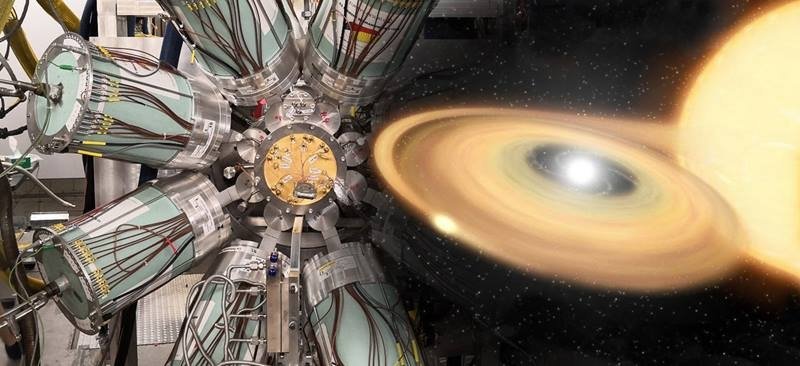
The history of astronomy and cosmology is full of stories showing how breakthroughs often occur one laboratory experiment at a time. During the last century, laboratory researchers explored how elements emit light at specific colors when heated to different temperatures. This has allowed generations of researchers, including me, to tease out what elements compose the stars and estimate just how hot various objects may be.
From experimenting with the interactions between light and atoms, researchers have moved on to exploring the relationships between energy and particles. This is accomplished in massive research facilities that can accelerate atoms to high velocities and crash them together to produce new and often unstable particles and atoms. Using Michigan State University’s National Superconducting Cyclotron Laboratory, researchers have studied how a beam of a specific chlorine atom – chlorine-31 – could stream into a detector and decay into sulfur-31 with the flip of a proton into a neutron. This sulfur would then, sometimes, release a proton and evolve one more time into phosphorus-30. This work appears in Physical Review Letters and was led by T. Budner.
This process, which reduces atoms from the 17-proton chlorine atom to the 15-proton phosphorus, is the inverse of a process that occurs in exploding stars and builds atoms with progressively more protons in their core, and this experiment was the first time we’ve been able to directly measure the rate that this kind of a reaction can occur at. This experiment provides new information on how fast or slow reactions can occur and informs how many different kinds of atoms have a chance to form during supernovae. With this new data plugged into supernovae models, they find that the explosion of white dwarf stars rich in oxygen-neon can “produce excesses of the isotope silicon-30.” This stable atom is found in grains of stardust and is a building block of everything from meteorites to Earth itself.
And now we know because atoms were slammed around in a lab on Earth. Science is weird, and science is awesome.

One thing science sometimes isn’t is straightforward. In the first half of the last century, Einstein redefined how we see our universe with his introduction of relativity. His work, which many non-scientists still struggle to accept, describes interactions between mass-energy – interactions like the orbit of the Moon and the bending of light around our Sun – as being a reflection of how our universe’s structure is shaped by gravity. According to his theory, any two masses in a gravitational field will fall at the same rate. Astronaut David Scott demonstrated this with a hammer and feather on the Moon in 1971, and today, two masses – platinum and titanium alloy test masses – repeated this experiment in orbit with remarkable precision by the MICROSCOPE mission.
The reason for this experiment was to see if the tiny quantum fluctuations that permeate our reality could be seen to affect gravitational interactions. The two masses were contained within a larger sphere set orbiting our Earth, and electrostatic forces were used to see if the two masses fell around the Earth in their orbit with any differences. These measurements were accurate to one part in 10^15 and, according to a new paper in Physical Review Letters, they saw nothing.
This means that while we can detect the quantum vibrations in mirrors using lasers, we don’t see anything similar with gravity. This once again seems to indicate that Einstein’s geometry-based description of gravity resists being combined with the particle-based descriptions of all the other forces using quantum mechanics.
I, for one, like my spacetime curvy and welcome this lack of measurable quantum variations in these orbiting masses.
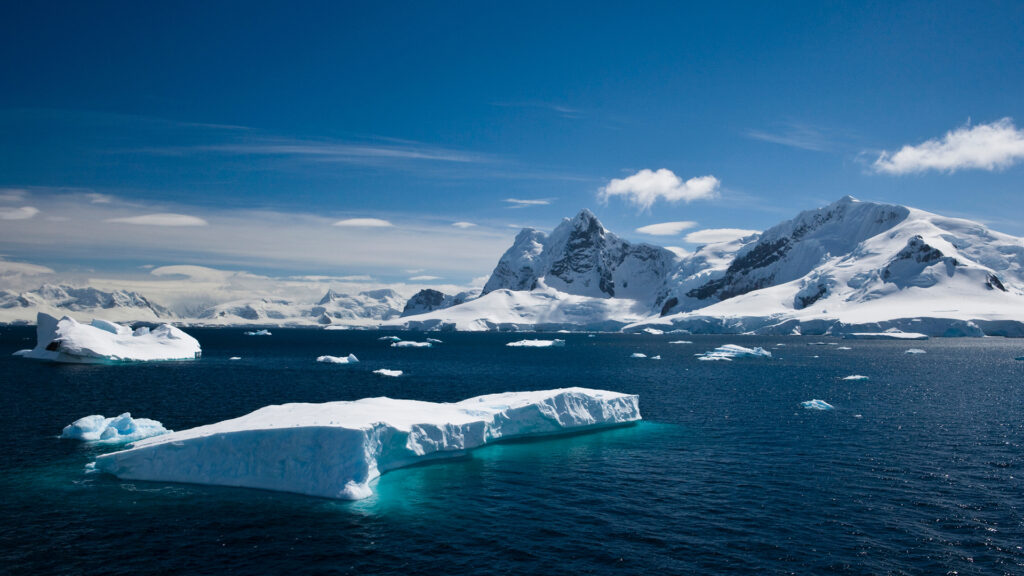
I have to admit that I am not and don’t ever plan to be an experimental astronomer. Give me data from a telescope, and I’m happy. If you give me a telescope, I’ll just attract clouds. So really, I just want the data.
It is from the perspective of being an observational astronomer that I now say some experiments really feel like things we should not do even if we can. At least not yet.
In a new paper in Environmental Research Communications, an international team of researchers led by Wake Smith state that it is possible to refreeze the Earth’s polar regions with the injection of aerosols into just the right places in the stratosphere. These aerosols would then reflect incoming sunlight, preventing it from warming the Earth, and, if done correctly, would provide a cheap and effective way to reverse some of the effects of climate change.
I’m just worried about what would happen if there are factors we don’t understand. So, yeah, the experimentalists could cool our planet but maybe let’s not try until we’ve exhausted other options.
And maybe let’s work on understanding how other worlds like Mars may have died before we try to save the Earth.
Coming up, we’re going to switch to looking at planets.

NASA’s Curiosity rover landed on the red planet ten years ago. Since then, it has traveled over eighteen miles along the surface, trundling slowly as it gathers massive amounts of data, searching for evidence of flowing water.
The landing site of the rolling laboratory is Gale Crater, an impact crater created at least 3.5 billion years ago. The crater is full of sediments, making it a prime target for understanding some of Mars’ wet history, especially with Aeolis Mons – also known as Mount Sharp – in the middle. As Curiosity approached the small mountain and started climbing its slopes, images revealed sedimentary layers in detail, likely created by water-eroded lake deposits.
Mount Sharp is about 1,300 feet high, and the depositional layers represent millions to tens of millions of years’ worth of deposited sand and mud. Curiosity not only took images of the formations but also collected samples of the rock and soil which were then analyzed with the onboard instruments. With more than 700 published papers to date, scientists around the world have discovered evidence of Mars’ ancient, wet past – a past that could have been habitable for life.
Now, in a new paper recently published in the Journal of Geophysical Research: Planets with lead author Jessica Watkins, researchers have presented evidence that water was not the only erosional force responsible for the shape of the terrain. Co-author John Grotzinger explains: The work of erosion on Mars is driven principally by the wind which acts like a feather duster over hundreds of millions to even billions of years. This is very different from Earth, for instance, where the extreme ruggedness of the San Gabriel mountains [in southern California] is created by torrents of rainwater dissecting the landscape over relatively brief periods of geologic time.
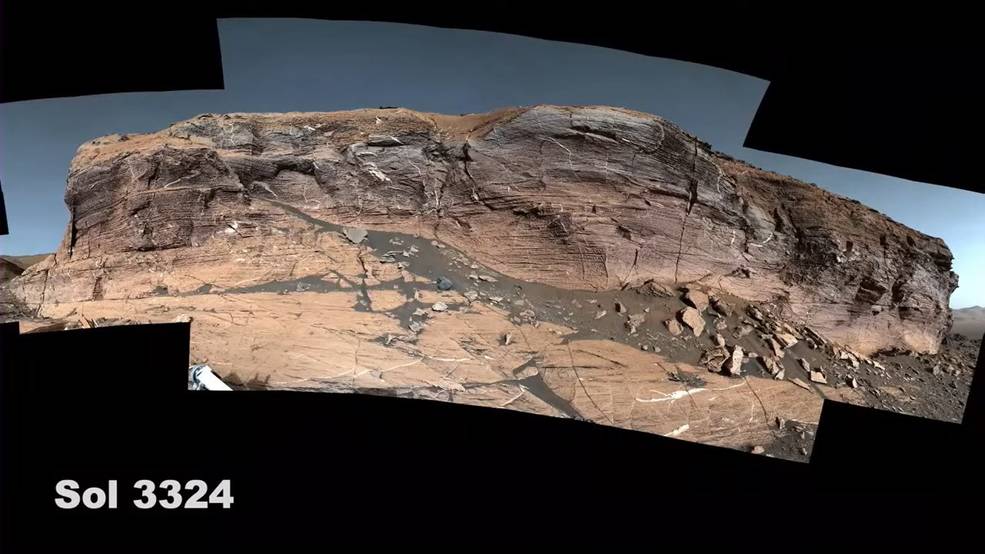
There are several distinct reasons for the difference in erosional processes between Mars and Earth. First, much of Earth’s land formation is related to plate tectonics. For example, two continental plates push up against each other, such as in the Himalayas, and they cause an uplift that builds mountains. At the same time, rivers in the region continue to cut down through the rock, resulting in deep canyons and exposing rocks from past millennia. Earthquakes can bring mountain slopes down; volcanoes can create new landmass – all as a result of tectonic processes.
And although the InSight lander has detected hundreds of small marsquakes, there is no evidence of tectonic activity. Instead, the surface of Mars is shaped by wind erosion.
In addition to Mars not having plate tectonics, the atmosphere of the red planet is a mere one percent that of Earth. As a result of that massive difference, much of the planetary society community downplayed the role of wind erosion on Mars. Wind may not play much of a role in the present day, but the evidence suggests it played a pivotal role billions of years ago. As the press release explains: …the [300-meter thick] Murray formation – which was formed from sediments deposited by water – has been eaten away from the top down. Further, the sediments deposited on top display a cross-bedding that is indicative of ancient sand dunes marching across a desert, driven by wind. On the whole, the landscape looks like a wet environment that was taken over by the Gobi Desert.
By documenting the many cycles of erosion, scientists can better understand the changing environment on Mars, and as Grotzinger notes: All of this helps us understand how Mars works overall and will inform scientists interpreting the observations of the Perseverance rover as well.
While we wait for the Mars Sample Return mission to bring us rocks from Jezero crater, both Curiosity and Perseverance continue to bring us amazing science.

Understanding the evolution of planets is one of the most important aspects of understanding planetary formation. We’ve said it before and we’ll say it again – no one set of rules or processes seems to apply to the formation of planetary systems. Our sample size of one has been proven to be an outlier of a system so far. And with bigger and better telescopes, we are getting to the point where directly imaging exoplanets is becoming more and more common, aiding us in our quest to find patterns.
Even better, we’re beginning to find incredibly young planets, and a new paper in The Astrophysical Journal Letters with lead author Feng Long has provided a potential new method to find those worlds. In this case, an exoplanet in the range of Neptune or Saturn size was discovered in the disk of planetary dust. The disk is LkCa 15, about 518 light-years away in the constellation of Taurus. Feng analyzed new high-resolution data from the ALMA Observatory to detect features that point to the presence of a planet.
The protoplanetary disk is about 42 AU from its parent star, and dust collecting in the L4 and L5 Lagrange points of the star indicates that a planet is forming in the disk. Long explains: We’re seeing that this material is not just floating around freely, it’s stable and has a preference where it wants to be located based on physics and the objects involved.
And the baby exoplanet is only about one to three million years old.
When you find one example, you know you have the tools to find another example. Scientists are continuing to push the limits of what we know, providing us with glimpses of processes long past for our own solar system that can then be applied to exoplanet populations… once we have even more examples to work with.
And now, let’s change things up with a rocket launch.
Now an update on the rocket launches that went up since last week.

Zhongxing-1E has entered the planned orbit successfully. CREDIT: Tu Haichao/Xinhua
There was only one, from China. However, it’s worth noting as it was only the fourth Long March 7A. The rocket sent up a satellite called Chinasat 1E from Wenchang, China’s island spaceport. The lower latitude position gives rockets heading East more performance thanks to the Earth’s rotation; and dropped stages land in the ocean, not on land. Both of these qualities are useful.
Chinasat is a series of government-owned communications satellites, usually launched by the pretty but deadly hypergolic propelled Long March 3B series of rockets. China is continuing to transition its routine launches over to its new generation of rockets, however, and this was the first Chinasat to be launched on Long March 7A. The 7A adds the liquid hydrogen-powered third stage of the 3B to the kerosene/oxygen first and second stages of the Long March 7. The Long March 7 will replace several Long March rockets including the 2F and 3B.
According to an article on the manufacturer’s social media, putting the payload on this new rocket was quite a bit of work, made even more complicated by working around pandemic restrictions. A link to the article in its original Chinese will be in the show notes for this episode.
Chinasat 1E will be used to deliver television, voice, and radio to users on the ground.
Coming up next, we look back at an important mission in lunar exploration.
This Week in Space History
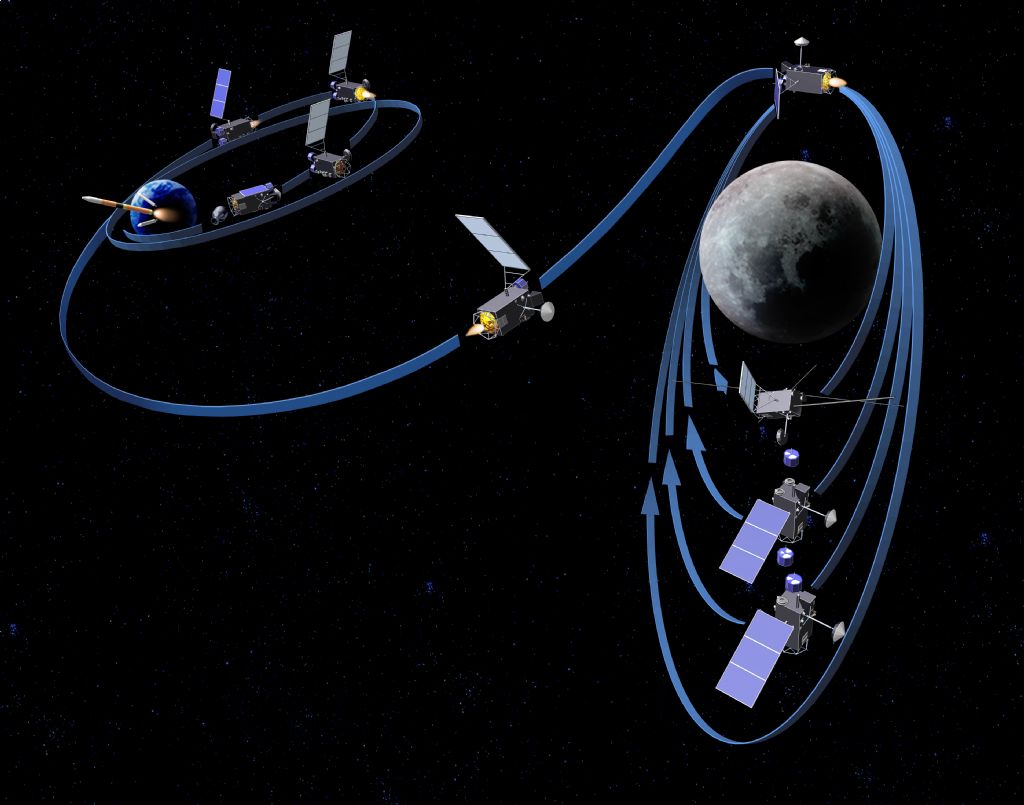
Last week, we talked about U.S. space policy speeches, particularly related to crewed lunar missions. This week we have an uncrewed lunar mission from Japan – SELENE, also called Kaguya.
Japan’s space program may have fewer resources than other countries’ space programs, but they still manage to complete innovative missions despite their tight budgets. One such mission was the SELenological and ENgineering Explorer, or SELENE. The largest object put into orbit around the Moon since the Apollo missions in the late-1960s and 1970s, SELENE’s goal was to survey the Moon’s surface from a very low orbit inclined 90 degrees to the lunar equator. This orbit allowed the close study of the Moon but required more propellant due to the lunar mass concentrations skewing its orbit.
SELENE launched on September 14, 2007, on an H-IIA rocket from the Tanegashima Space Center in Japan and entered orbit around the Moon on October 4. Once in its high capture orbit, SELENE deployed two small satellites. The first was a relay satellite to ensure the main satellite could maintain communication with Earth while on the far side of the Moon and the other to perform Very Long Baseline Interferometry in cooperation with radio telescopes on Earth.
After the insertion of those two satellites, SELENE lowered itself into its operational orbit of 100 kilometers above the Moon, where it stayed for the next fifteen months until it was lowered into a 50-kilometer circular orbit. The orbit’s lowest point, the perilune, was further lowered to 30 kilometers two months later. Finally, after SELENE had exhausted most of its propellant and had a failing reaction wheel, the spacecraft was deorbited into the lunar surface on June 10th, 2009.

What did it do during those months and what have scientists learned by analyzing the data since? Lots! SELENE had fourteen instruments onboard and also conducted an investigation in conjunction with its two smallsats.
SELENE’s primary objective was to measure the Moon’s gravity, topography, and mineral composition. It measured topography by combining pictures with data from a laser altimeter and tracking data from Earth. Gravity was also measured indirectly by tracking the spacecraft’s speed in orbit from Earth. Its orbital speed changed slightly depending on the local gravity. To measure gravity on the far side of the Moon, SELENE used its relay satellites. Measuring the gravity of the Moon helps understand what’s below the surface, which gives some clues to how it might have formed and changed.
Combining these three methods, SELENE discovered that the lunar far side has very different gravity concentrations than the near side. On the near side, there are more areas of stronger gravity, namely mountains and other mass concentrations or mascons. On the far side, there are no mascons but instead large numbers of basins and craters. The reason for this difference is thought to be a result of differential cooling, with the far side being cooler and thus more resistant to changes. SELENE’s measurements determined a possible age for when the geologic activity on the Moon ended: 2.5 billion years ago. A paper using SELENE data was published this year, 2022.
SELENE also mapped the entire Moon in 10-meter stereo resolution. This means it had two cameras with different perspectives – one on the front of the spacecraft and the other on the back – that combined to produce three-dimensional images.
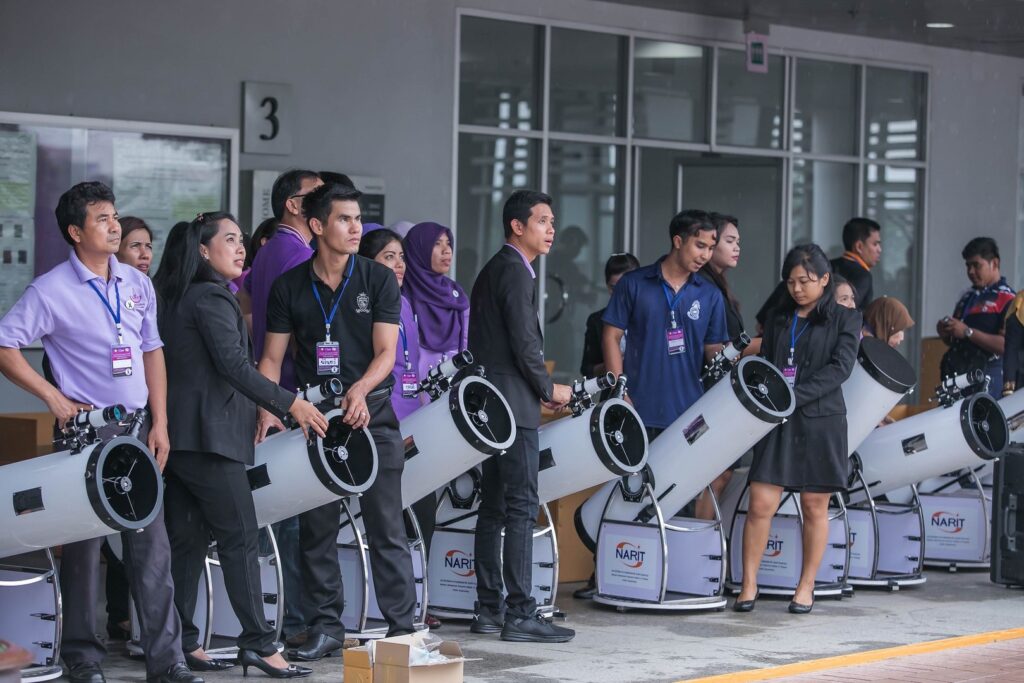
SELENE’s mission overlapped with several other lunar orbiters, including China’s Chang’e 1 launched one month later and India’s Chandrayaan-1 launched ten months after that. Chang’e 1’s mission ended before SELENE, deliberately impacting the Moon on March 1, 2009. Chang’e 1 was followed by four other Chang’e lunar missions, including one more orbiter, two rovers, and a sample return.
NASA’s Lunar Reconnaissance Orbiter, which entered lunar orbit thirteen days after SELENE was deliberately crashed into the surface, is still in operation today. Chandrayaan-1 is inactive but still in orbit around the Moon.
One other historical event of note this week is the birth of famous amateur telescope maker John Dobson on September 14, 1915. His combination of existing technologies in the Newtonian reflector optical design and rocker box alt-az mount allowed amateurs to make large telescopes that were previously very costly to build. Commonly known as a Dob, it has its roots in sidewalk astronomy and continues to be popular with astronomers to this day.
Statistics
And now, for some statistics.
The number of toilets in space is eight: four on the ISS, one on Soyuz MS-21, one on the Crew Dragon Freedom, one on Tianhe, and one on Shenzhou 14.
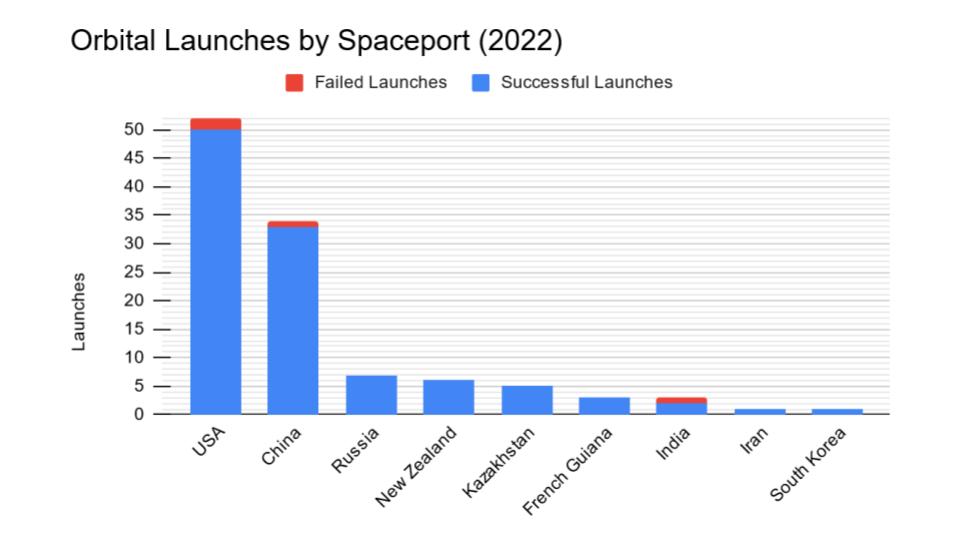
We keep track of orbital launches by launch site, also called spaceport. Here’s that breakdown:
USA: 53
China: 35
Russia: 7
New Zealand: 6
Kazakhstan: 5
French Guiana: 3
India: 3
Iran: 1
South Korea: 1
From those 114 launches, a total of 1,772 spacecraft have been put into orbit in 2022, with 1,350 of them being Starlinks, which is about seven out of every ten satellites launched so far this year.
Your random space fact for this week is that astronaut and lead author Jessica Watkins made the final edits to the paper recently published about wind erosion on Mars while she was on board the International Space Station. She completed the paper as a postdoc and made it all the way through astronaut training and into space before the proofs were ready from the publisher.
This has been the Daily Space.
You can find more information on all our stories, including images, at DailySpace.org. As always, we’re here thanks to the donations of people like you. If you like our content, please consider joining our Patreon at Patreon.com/CosmoQuestX.
Credits
Written by Pamela Gay, Annie Wilson, Beth Johnson, Erik Madaus, and Gordon Dewis
Hosted by Pamela Gay, Beth Johnson, and Erik Madaus
Audio and Video Editing by Ally Pelphrey
Content Editing by Beth Johnson
Intro and Outro music by Kevin MacLeod, https://incompetech.com/music/


 We record most shows live, on Twitch. Follow us today to get alerts when we go live.
We record most shows live, on Twitch. Follow us today to get alerts when we go live.